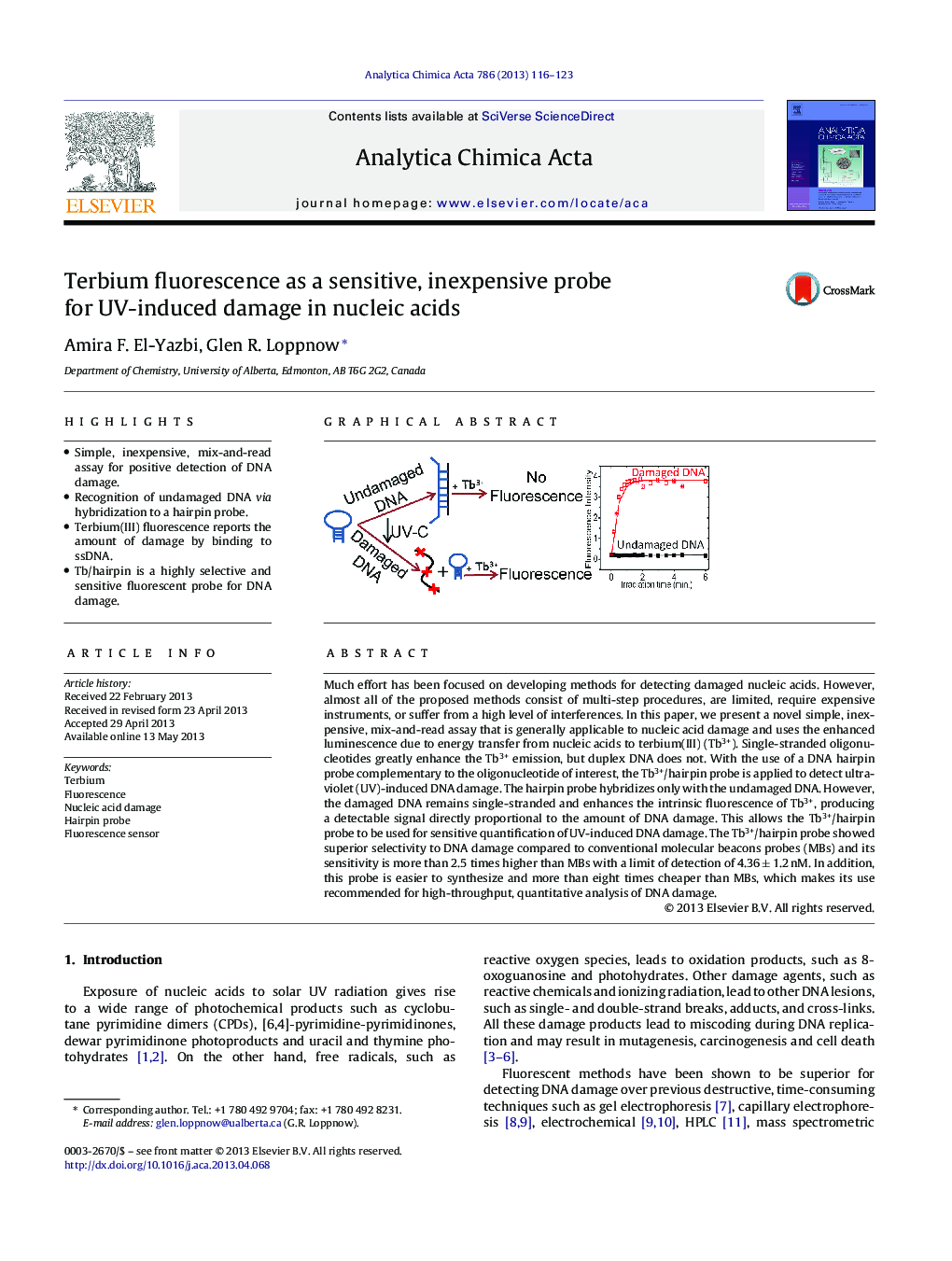| کد مقاله | کد نشریه | سال انتشار | مقاله انگلیسی | نسخه تمام متن |
|---|---|---|---|---|
| 1164696 | 1491046 | 2013 | 8 صفحه PDF | دانلود رایگان |

• Simple, inexpensive, mix-and-read assay for positive detection of DNA damage.
• Recognition of undamaged DNA via hybridization to a hairpin probe.
• Terbium(III) fluorescence reports the amount of damage by binding to ssDNA.
• Tb/hairpin is a highly selective and sensitive fluorescent probe for DNA damage.
Much effort has been focused on developing methods for detecting damaged nucleic acids. However, almost all of the proposed methods consist of multi-step procedures, are limited, require expensive instruments, or suffer from a high level of interferences. In this paper, we present a novel simple, inexpensive, mix-and-read assay that is generally applicable to nucleic acid damage and uses the enhanced luminescence due to energy transfer from nucleic acids to terbium(III) (Tb3+). Single-stranded oligonucleotides greatly enhance the Tb3+ emission, but duplex DNA does not. With the use of a DNA hairpin probe complementary to the oligonucleotide of interest, the Tb3+/hairpin probe is applied to detect ultraviolet (UV)-induced DNA damage. The hairpin probe hybridizes only with the undamaged DNA. However, the damaged DNA remains single-stranded and enhances the intrinsic fluorescence of Tb3+, producing a detectable signal directly proportional to the amount of DNA damage. This allows the Tb3+/hairpin probe to be used for sensitive quantification of UV-induced DNA damage. The Tb3+/hairpin probe showed superior selectivity to DNA damage compared to conventional molecular beacons probes (MBs) and its sensitivity is more than 2.5 times higher than MBs with a limit of detection of 4.36 ± 1.2 nM. In addition, this probe is easier to synthesize and more than eight times cheaper than MBs, which makes its use recommended for high-throughput, quantitative analysis of DNA damage.
Figure optionsDownload as PowerPoint slide
Journal: Analytica Chimica Acta - Volume 786, 5 July 2013, Pages 116–123